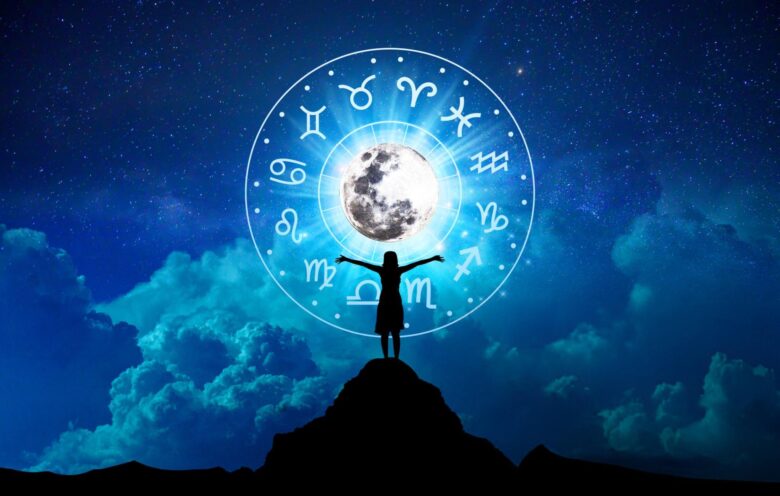Have you ever sat under a glowing full moon, candle flickering, intentions written neatly in your journal—only to feel like nothing really shifted afterward? You’re not alone. Many people step into the world of moon rituals with hope and excitement, but sometimes the experience feels flat or ungrounded. The reason isn’t that moon rituals don’t “work,” but rather that subtle mistakes often get in the way.
Understanding moon ritual mistakes can transform your practice from a half-hearted routine into a sacred, soul-nourishing experience. Just like astrology houses or zodiac signs, rituals carry energy patterns. When we align with them consciously, they become powerful tools for healing, reflection, and growth. In this article, we’ll explore the five most common mistakes people make during moon rituals, how to avoid them, and how to connect more deeply with the moon’s cycles for emotional balance and spiritual clarity.
Why Moon Rituals Matter Spiritually and Emotionally
For centuries, the moon has been seen as a mirror of our inner world. Ancient cultures used lunar phases to guide planting, ceremonies, and community events. Today, many spiritual seekers turn to moon rituals as a way to reset intentions, release negative energy, or find emotional grounding.
Personally, I remember the first time I did a new moon ritual after a particularly stressful period in my life. I lit candles, scribbled my intentions, and left crystals by the window to charge. The next morning, I felt lighter—not because magic erased my struggles, but because the ritual gave me space to breathe, reflect, and choose again.
The emotional significance of moon rituals lies in their ability to help us pause. In a world of endless scrolling and constant productivity, creating ritual time allows us to connect inward, which in itself can be profoundly healing. Yet, without mindfulness, we can slip into autopilot and miss the depth of what these moments offer. That’s why identifying common mistakes is so valuable.
Mistake One: Treating the Ritual as a Quick To-Do
One of the most common moon ritual mistakes is rushing through the practice. If you light a candle, scribble intentions, and immediately check your phone, the ritual loses its potency. Moon work is less about what you do physically and more about the presence you bring.
Astrologer Susan Miller once wrote that “the moon holds a mirror to our emotional body.” If you approach the mirror in a hurry, you won’t see clearly. Rituals thrive in slowness. Even a ten-minute pause, taken with genuine presence, is more powerful than an hour of distracted activity.
Spiritually, this mistake is a reminder to honor the sacredness of time. When you linger with your intentions—breathing into them, visualizing them—you create a deeper connection that the subconscious mind can hold onto.
Mistake Two: Ignoring the Moon Phase
Another frequent error is treating all moon rituals the same. The moon waxes, wanes, disappears, and returns. Each phase holds different energy, and rituals gain meaning when they align with that rhythm.
The new moon is a time for beginnings, planting seeds, and setting fresh intentions. The full moon is about culmination, reflection, and release. The waning moon invites letting go, while the waxing moon encourages growth and momentum.
When I first began, I performed a “release ritual” under a waxing moon, and I felt strangely restless afterward. Later, I learned why—the waxing moon wasn’t asking me to let go, it was inviting me to build. Once I adjusted, the practice flowed more naturally.
According to Astrology.com, “Aligning your ritual with the moon phase amplifies its intention.” In other words, tuning into the cycle isn’t superstition—it’s rhythm. Just as you wouldn’t plant seeds in winter, you wouldn’t release during a waxing moon.
Mistake Three: Overcomplicating the Ritual
It’s tempting to believe that a moon ritual requires elaborate altars, expensive crystals, or rare herbs. While these tools can be beautiful, they’re not required. The essence of ritual lies in intention, not aesthetics.
I’ve seen friends give up on rituals because they didn’t have sage to burn or couldn’t afford the “right” candle set. But some of my most powerful experiences came from simply sitting under the moonlight, journaling my feelings, and breathing deeply.
AstroStyle reminds practitioners: “Rituals are symbolic acts. It’s the meaning you bring to them that transforms the moment.” A flower from your garden, a glass of water, or even your bare hands can hold sacred energy when used with awareness.
Spiritual growth often calls us back to simplicity. The moon itself is accessible to everyone—shining without cost or condition.
Mistake Four: Forgetting the Body
Another overlooked mistake is keeping rituals entirely mental. Writing intentions is powerful, but if your body isn’t included, the energy can feel stuck. Moon rituals invite embodiment.
This might mean gentle movement under the moonlight, breathwork, or even simply placing your hand on your heart while reciting intentions. When I began pairing full moon releases with deep exhalations—imagining old energy leaving with each breath—I noticed a profound shift. The ritual moved from being an idea to an embodied release.
Psychology research also suggests that somatic practices—those that involve the body—help anchor new habits and beliefs more effectively. In this way, adding embodiment to moon rituals isn’t just mystical; it’s grounded in science.
Mistake Five: Neglecting Follow-Through
Perhaps the most common moon ritual mistake is expecting the ritual itself to do all the work. Writing intentions at the new moon is inspiring, but if you don’t revisit or act on them, they remain words on a page.
A lunar ritual is like planting a seed. You must water it, nurture it, and protect it for it to grow. This might look like checking in with your journal mid-cycle, adjusting goals, or taking small aligned actions.
AstroSeek notes that “rituals are entry points, not endpoints.” They open the doorway to change, but walking through requires consistent attention. Spiritually, this is a reminder that the universe collaborates with you, but it also asks you to collaborate with yourself.
A Comparison Table: Moon Phases and Ritual Energy
| Moon Phase | Energy Focus | Best Rituals | Spiritual Lesson |
|---|---|---|---|
| New Moon | Beginnings | Setting intentions, vision journaling | Plant seeds for growth |
| Waxing Moon | Expansion | Building momentum, affirmations, planning | Nurture and take action |
| Full Moon | Culmination & Release | Gratitude practice, letting go, meditation | Embrace clarity and release |
| Waning Moon | Closure | Clearing clutter, forgiveness rituals | Trust endings as part of renewal |
Expert Advice and Real-Life Connection
When I spoke with a local astrologer during a lunar workshop, she said something that stayed with me: “The moon doesn’t ask for perfection. It asks for presence.” That simple truth reframed my entire relationship with rituals.
A friend of mine, a busy professional and mother, used to feel guilty for missing elaborate rituals. Once she embraced simplicity, her practice became more consistent. Now, she simply lights a candle during full moons, says a short prayer of gratitude, and spends five minutes in silence. It’s enough, and it nourishes her deeply.
Experts like Astrology.com emphasize that moon rituals should be personalized. What works for one person may not resonate with another. The key is to listen inward and honor your unique rhythm.
Final Thoughts and Summary
Moon rituals are not about perfection, aesthetics, or rigid rules. They are invitations to pause, breathe, and align with the cycles of nature and the cycles within yourself. By avoiding common moon ritual mistakes—such as rushing, ignoring the phases, overcomplicating the practice, neglecting the body, or forgetting follow-through—you can create a ritual experience that feels alive, authentic, and deeply supportive.
The moon will continue to rise whether you practice or not. But choosing to engage with it mindfully offers a gift: a rhythm to ground you, a mirror to reflect your inner world, and a gentle reminder that life itself moves in cycles of beginnings, middles, and endings.
So the next time you stand under her glow, remember—you don’t need to do it perfectly. You only need to do it with presence.




